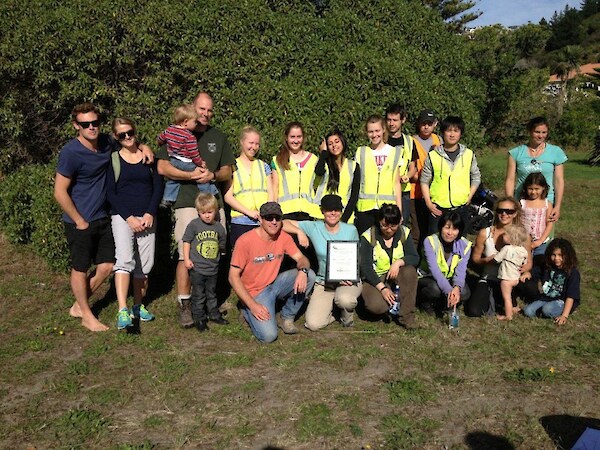Spinifex returns to Canterbury coastlines
The native sand binding plant Spinifex, or Kowhangatara, has been locally extinct from areas in Canterbury for over 100 years – until now. This year two Canterbury community groups have made huge steps towards restoring this once abundant species to their local beaches.
Sumner Environment Group in Christchurch City have been replanting areas of the Sumner beach foredune in an effort to increase biodiversity values and reduce wind-blown sand. Monitoring results in May show that Spinifex plants planted in previous years are producing viable seed and seedlings are now appearing on the dunes. This is a huge success for an area that has, in the past, been completely void of any native sand dune species. Read about their success story
 Sumner Environment Group -2013 Coastal Restoration Trust Award
Sumner Environment Group -2013 Coastal Restoration Trust Award
Sumner Environment Group received the 2013 Coastal Restoration Trust Best Coastal Community Group Award
Further north at Te Kohaka o Tuhaitara Coastal Park, 2000 Spinifex plants have been planted by dedicated local community and Council groups. This planting is part of a 575 stretch of North Canterbury coastline being managed with a long term vision to progressively restore the sand dunes, backdunes, forested areas and inland waterways to self sustaining ecosystems of predominantly indigenous species. The area includes the Tūtaepatu Lagoon which is the largest area of natural open water in the coastal strip between the Waimakariri and Ashley Rakahuri Rivers. The entire area is highly valuable to local iwi and these values are fundamental to the holistic approach being taken for the restoration work. Read more about Te Kohaka o Tuhaitara (PDF, 785.75 kB)
The Restoration goal for Tutaepatu Lagoon is “a lagoon with largely indigenous vegetation that supports mahinga kai and spiritual values”.
These two Canterbury projects were the recipients of the 2013 Coastal Restoration Trust Awards presented at the annual conference in Nelson.
Posted: 4 August 2013 in the News category

